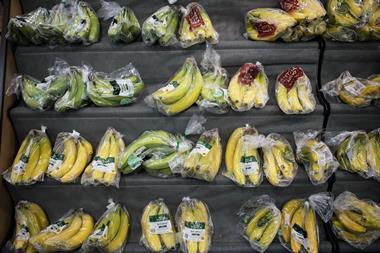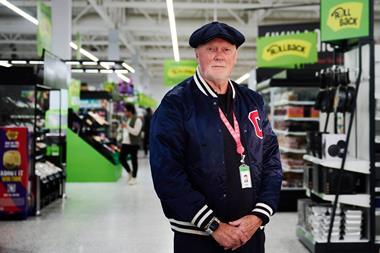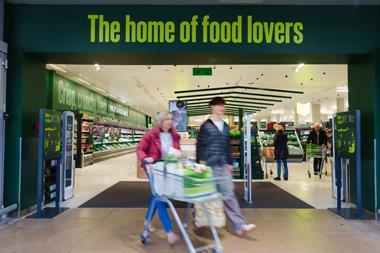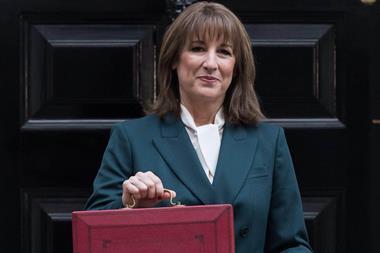Grocers are growing green fingers. Can they flourish in this quirky sector, or will their interest wilt?
Across the country, impromptu garden centres, stacked with plants, compost, grow-bags and even furniture have been popping up in supermarket car park trolley bays - an easy way to extend ‘shelf’ space while circumventing planning restrictions.
But it’s the more strategic encroachment by supermarkets into the £5bn-a-year garden centre sector that’s most tantalising. When Tesco acquired Dobbies in 2007, there were fears it would turn the centres into yet more Extras, in a straight land-grabbing exercise. In the event, Dobbies has remained a standalone business, and if anything, has been treated more as a hobby than a transformational opportunity. Store numbers have grown from 21 to 32. And it wants to increase that figure to 100 by 2020. But in the year to 29 February 2012, pre-tax profits rose 5.6% to £10.5m, on sales up 22% to £136.4m. It’s not what you would call earth shattering.
In June, however, Tesco, revealed plans to build its first store combining a supermarket and a Dobbies garden centre. The 130,000 sq ft megastore, in Kings Lynn, will be home to a 50,000 sq ft Dobbies Garden World with restaurant and food hall, and an 80,000 sq ft Tesco Extra. It also has a Tesco adjacent, but not attached to, a Dobbies in Gillingham. And in February this year had planning approved for a similar scheme in East Kilbride.
Nor is Tesco the only supermarket paying close attention to garden centres. Morrisons ran the rule over The Garden Centre Group’s 129 sites last year (subsequently snapped up by private equity group Terra Firma). Waitrose has proposed a £40m development in Shrewsbury encompassing a superstore, retail hub and Percy Thrower Garden Centre. And in Northampton, it has also proposed a 15,000 sq ft store next to a Garden Centre Group outlet.
Be it Tesco’s bolt-on acquisition or a strategic collaboration, the rationale is compelling: garden centres have evolved from specialist sites just selling plants, to destinations in which consumers buy plants, but also food, gifts, homewares and fashion, as well as using the café or restaurant. The Garden Centre Group even promotes its centres as ‘the perfect alternative to motorway services’. Tesco’s Kings Lynn site embodies this trend. “We believe customers will relish the opportunity to visit our new destination as part of the weekly routine,” reasons Dobbies property director Stuart Wright.
Fertile ground
The £5bn garden centre sector is highly fragmented, made up of roughly 2,700 operators, many of them single-site indies.
The biggest is The Garden Centre Group, operator of 129 garden centres in England and Wales. Other notables include Notcutts, with 19 sites, and Squires and Hillers, with 14 sites each. DIY chains B&Q, which has 350 stores, and Homebase, which has more than 300, also have well-established gardening offers.
And last August Next opened its first Home & Garden store, in West Sussex.
Indies are also buying into the argument. Sussex-based Jempson’s, for example, is currently building a 15,000 sq ft garden centre extension to its flagship supermarket in Peasmarsh. “We already have footfall, but our plan is to create one-stop shopping and increase the time spent at Peasmarsh by providing that ‘day out’ experience,” says director Stephen Jempson. “Due to our village location and increased fuel costs, we need something that is unique and more of an attraction to bring people to the site.”
The typical offer of a garden centre is also the perfect fit for a grocer, says Andrew Maxted, marketing director for the Horticultural Trades Association.”Supermarkets have stocked garden ranges for years and typically see this as a seasonal offer, particularly with garden furniture, barbecues and bedding plants in spring,” he says. “With fresh produce experience supermarkets are, in theory, well-placed to stock, care for and sell garden and house plants.”
The sector is no bed of roses however. Since the start of 2012, players have had to contend with hosepipe bans and record breaking wet spells. The stagnant housing market - crucial to the industry - hasn’t helped either. According to the HTA Garden Retail Monitor, garden centre sales in the year to the end of April slumped 17%.
Perhaps that’s why Morrisons opened 129 temporary in-store garden centres this year while focusing its capex acquiring cut flowers business, Flower World in June last year. “Garden centres are a good business for us and the customer,” explains Jane Speakman, MD (designate) horticulture at Morrisons. “As a business we are able to deal directly with growers, which allows us to provide great value and quality to our customers.”
Despite a highly fragmented market HTA’s Maxted also warns that consolidation may be limited. “It is more challenging for supermarkets to carry the wide range of plants demanded by keen gardeners and to attract the suitably qualified staff that plants require,” he says. “These factors, with browsability and inspiration, underpin British gardeners’ continuing love affair with garden centres and specialist nurseries.”
However, as the mults look for more avenues for growth, and to attract customers to out-of-town stores, their green fingers will only grow, predicts Shore Capital’s Clive Black. “In mature grocery markets, the combination of impulse purchases such as plants, and complementary add-ons like garden lines, can be expected to feature in more supermarket plans.”


















No comments yet